Effective Strategies for Trapping Voles in Your Garden
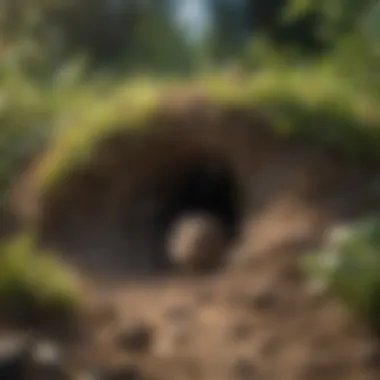
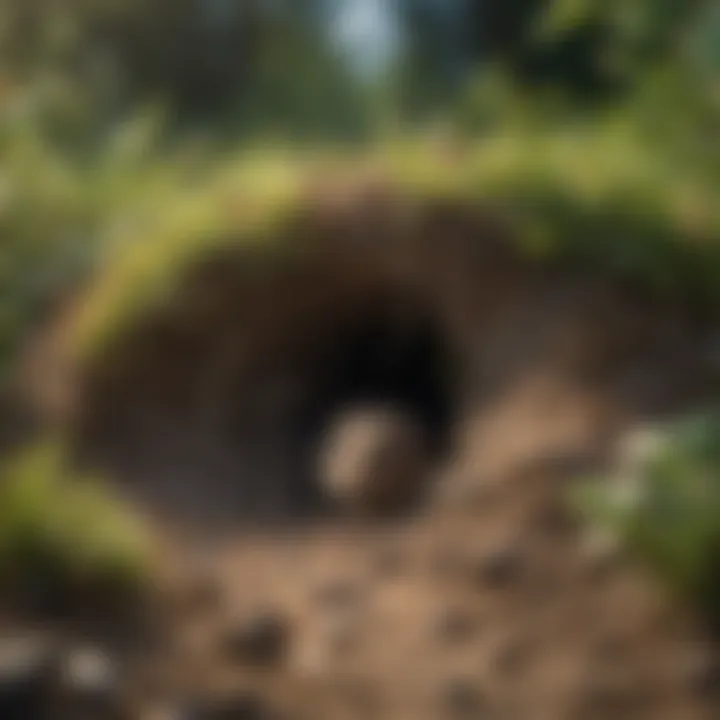
Intro
Voles, small burrowing rodents, can be a significant nuisance in gardens. Their rapid reproduction rate and tendency to feed on a variety of plants can lead to considerable damage to both flowers and crops. Understanding how to effectively manage their populations through trapping is fundamental for garden enthusiasts. This guide will provide detailed insight into the behavior of voles, practical trapping techniques, and effective preventive measures to protect your garden.
Understanding Pests
Definition of Pests
In the context of gardening, pests are organisms that cause harm to plants, disrupt growth patterns, and can alter the ecosystem within a garden. Voles qualify as pests due to their feeding habits which can jeopardize the health of your plants and landscape. Identifying these creatures and understanding their lifecycle is essential for effective management.
Importance of Pest Identification
Identifying voles accurately is crucial since many garden pests can resemble one another. Voles are often confused with mice but have distinct characteristics. They have stockier bodies, shorter tails, and larger eyes. Proper identification ensures that you choose the right strategies for extermination and control, preventing unnecessary harm to beneficial insects.
Prevention Techniques
Home and Garden Preventative Measures
Preventing vole infestations should be the first line of defense. Here are some strategies:
- Maintain Garden Hygiene: Regularly clear debris and keep grass trimmed short. Taller grass provides cover for voles.
- Use Barriers: Install fencing with material buried six to ten inches underground to deter burrowing.
- Plant Selection: Choose plants that are less attractive to voles. Some plants contain natural repellents.
Seasonal Prevention Tips
Adjusting your approach with the changing seasons can be beneficial. Some seasonal tips include:
- In fall, remove fallen fruits and nuts from the ground, as they attract voles.
- During spring, monitor for signs of activity as young voles begin to venture out.
Eco-Friendly Pest Control Solutions
Overview of Sustainable Practices
Opting for eco-friendly pest control methods is essential for maintaining an ecological balance. Sustainable practices include:
- Trapping: Using traps to catch voles humanely, ensuring they are removed from the area.
- Habitat Modification: Making the garden less inviting for voles through strategic landscaping measures.
Natural Remedies and Their Effectiveness
Utilizing natural repellents can also help deter voles. Some effective remedies include:
- Castor Oil: Applying castor oil in areas where voles are active can discourage them.
- Essential Oils: Using scents like peppermint can act as a natural deterrent.
Effective trapping and eco-friendly methods ensure you can manage vole populations without negatively impacting your garden's ecosystem.
By understanding the nature of these pests and implementing preventive strategies, homeowners can maintain a thriving garden free from the damage caused by voles.
Understanding Voles
Understanding voles is critical for effective garden management. These small rodents can cause significant damage to plants, bulbs, and roots. By recognizing their behaviors, habitat preferences, and distinctive features, homeowners can devise more effective trapping strategies and minimize the negative impact on their gardens.
Identifying Voles
Voles are often mistaken for other small rodents, such as mice or field mice. However, they have distinct characteristics that help in identification. They are stout, with a rounded body, short legs, and a blunt snout. Their fur is usually brown or gray with a paler belly. The size is also noteworthy; voles typically measure around 4 to 10 inches in length, depending on the species.
Common species include the meadow vole and the pine vole. In the garden, they may leave characteristic signs such as burrows and runway trails through the grass or mulch. The presence of gnawed roots, bulbs, or the base of plants is often an indication of voles. Additionally, they create small holes in the ground, which can lead to confusion with other pests.
Vole Behavior and Habits
Vole behavior is marked by their burrowing and feeding habits. They are most active during dawn and dusk, and they tend to create extensive burrow systems. Voles are herbivores and feed on a wide range of plant material. This includes grasses, seeds, and roots. Their appetite can lead to substantial damage in gardens, especially if not addressed.
Moreover, voles reproduce quickly. A single pair can lead to many offspring in a year, further complicating management efforts. Understanding their reproductive habits can help in planning trapping efforts effectively. It is crucial to monitor the garden for signs of voles and act promptly once they are identified.
Reasons for Trapping Voles
Trapping voles serves as a necessary step for many homeowners who wish to protect their gardens from extensive damage. Understanding the reasons for trapping voles will help in recognizing its importance in maintaining both aesthetic and ecological balance within a garden. Voles are known for their destructive feeding habits. They consume a range of plants, including vegetables, fruits, and ornamental plants. This can lead to significant financial loss, as well as disappointment when trying to cultivate a beautiful space.
Impact on Gardens
The impact of voles on gardens can be severe and multifaceted. They tend to feed on crops very rapidly. This can create bare spots, which not only looks unappealing but also affects the growth cycle of other plants. Moreover, voles can disrupt the soil structure as they burrow. Soil disturbance leads to a loss of nutrients and potentially hampers the growth of healthy root systems.
Furthermore, voles are also responsible for damaging the roots of plants. If the roots are compromised, then the whole plant might struggle to thrive. This results in less yield for gardeners who work hard to foster their plants.
To mitigate these negative effects, homeowners must take proactive measures. An appropriate trapping strategy can help in reducing vole populations. By reducing their numbers, it gives plants a chance to recover and grow without excessive pressure from hungry rodents. Thus, trapping provides a practical solution to an ongoing problem.
Ecological Considerations
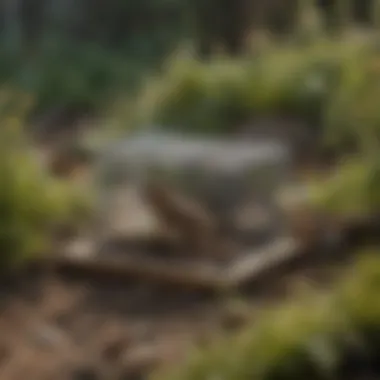
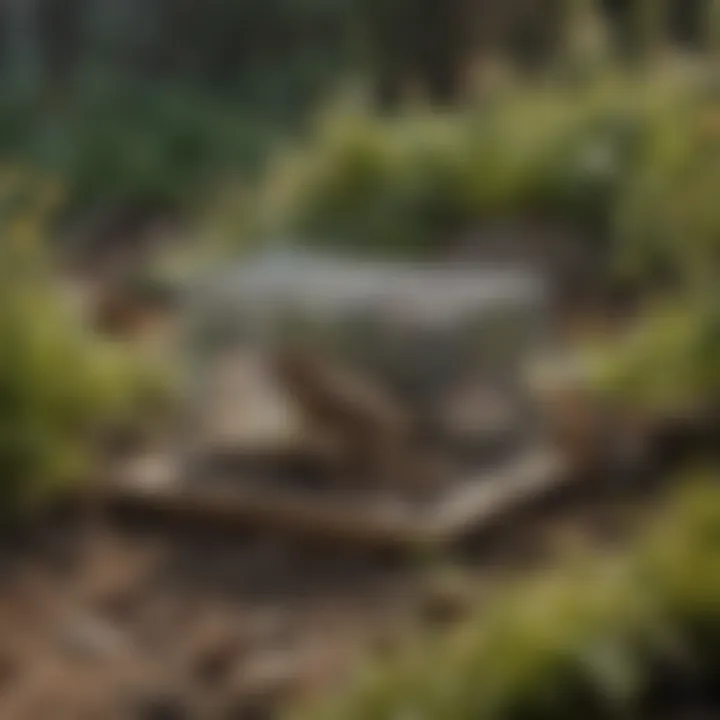
While focus is often placed on the destruction that voles impose, it is also crucial to consider the ecological aspects involved. Voles play an integral role in the ecosystem. They serve as prey for various predators, including owls and foxes. Removing them completely from the environment could disrupt local predator populations. This further highlights the need for responsible trapping that balances control with ecological awareness.
Furthermore, when trapping voles, one must consider the implications of chemical control methods. Some methods could potentially harm other wildlife or nearby pets. Utilizing humane trapping techniques not only addresses the issue of voles but also respects the integrity of the broader ecosystem.
Overall, understanding the reasons for trapping voles goes beyond merely safeguarding your garden. It encompasses protecting the ecosystem while promoting healthy gardening practices. By appreciating both the impact on gardens and the ecological considerations, homeowners can adopt a more comprehensive approach to vole management.
Ethical Considerations in Pest Control
When addressing the topic of trapping voles, the ethical considerations involved in pest control take center stage. Increasing awareness of ecological systems highlights the importance of managing pest populations like voles with sensitivity and responsibility. Homeowners and gardening enthusiasts must recognize that while voles can cause significant harm to their gardens, the methods used to control them must align with humane principles and ecological integrity.
The ethical dimension emphasizes the value of life and the need to minimize suffering. Many believe that pests share our environment and have a role in the ecosystem. Therefore, choosing methods that are not only effective but also humane is critical. Utilizing appropriate trapping techniques that limit distress to the animal should be prioritized. This approach respects the balance of nature and ensures that pest management fosters a healthy coexistence, rather than triggering negative consequences for wildlife.
In addition to humane considerations, the ethical use of tools and equipment for trapping voles should incorporate the long-term effects on the local ecosystem. Understanding the population dynamics of voles, as well as their predators, helps in creating strategies that avoid disproportionate impacts on the surrounding environment.
Benefits of Ethical Vole Control
When one engages in ethical pest control practices, several benefits emerge:
- Reduced Suffering: Humane traps decrease pain and stress for captured animals, supporting a more compassionate approach to management.
- Ecological Balance: Responsible trapping does not significantly upset the local food web, allowing natural predators to continue maintaining vole populations.
- Community Responsibility: Ethical methods promote community values and awareness of wildlife management, encouraging neighbors to adopt similar practices.
Awareness of these considerations encourages informed decision-making and supports practices that contribute positively to one’s environment and social responsibility.
Humane Trapping Methods
Humane trapping entails using tools designed to capture voles without causing severe injury or death. Trap options such as live traps allow for the safe capture of these rodents while minimizing discomfort. These traps often feature bait stations that attract voles, leading them inside without risk of harm.
Other humane methods might involve the use of multi-catch traps, which capture multiple voles at once. These systems enable simple monitoring and relocation of captured animals.
"Using humane traps reflects a commitment to respecting all life, even when managing pest populations."
When implementing humane trapping methods, it is essential to regularly check the traps to ensure that trapped voles do not suffer from dehydration or stress. Frequent checks minimize any potential suffering and demonstrate an ethical approach.
Environmental Impact
The environmental impact of trapping voles must also be considered. Unchecked pest control can lead to unintended consequences, both for the environment and other wildlife. When traps are used improperly or without regard for the broader ecosystem, it can lead to over-trapping or negative impacts on non-target species.
In contrast, implementing thoughtful and well-researched trapping strategies can help balance vole control with ecological integrity. The focus should also shift towards creating an environment that discourages vole habitation, such as proper landscaping practices and the use of barriers.
Furthermore, using traps that are designed to be environmentally friendly can help reduce the ecological footprint of pest control efforts. By actively considering the environmental implications of each choice, homeowners can foster better long-term solutions that support a sustainable garden ecosystem.
Tools and Equipment for Trapping Voles
When managing vole populations in gardens, selecting the right tools and equipment is crucial. The efficiency and effectiveness of trapping largely rely on the technology and methods used. Understanding the types of traps available and their specific applications is essential for achieving desirable results.
Different traps offer unique benefits and challenges. Therefore, knowledge about them empowers gardeners to make informed choices that align with their pest-control goals. Choosing the right equipment can ensure that the trapping process is both humane and efficient, minimizing the risk of accidents or unintended consequences.
Types of Traps
Snap traps
Snap traps are one of the most widely used methods for trapping voles. Their primary function is to kill the targeted rodent quickly and efficiently. The key characteristic of snap traps is their simple mechanism, which uses a spring-loaded bar to deliver a swift blow, making them effective in reducing rodent numbers. This efficiency is a significant reason they are popular among many gardeners.
One unique feature of snap traps is their compact size, allowing for easy placement in small spaces where voles are active. They can be set along common pathways or near burrows. However, their use raises ethical questions regarding humaneness. While they are effective, care must be taken to place them in a way that minimizes unintended harm to other animals.
Live traps
Live traps offer an alternative for those seeking humane methods of pest control. These traps capture voles alive, allowing for potential relocation away from the garden. The main advantage of live traps is that they prevent killing the animal, aligning with ethical pest control practices. This characteristic appeals to eco-conscious gardeners who prefer non-lethal methods.
A unique benefit of live traps is that they can often capture multiple voles at once. This efficiency makes them a preferred choice for high-infestation areas. However, there are drawbacks, such as the need for regular monitoring. Failure to check live traps may lead to stress or harm to the trapped animals due to prolonged confinement.
Digital traps
Digital traps represent a modern approach to trapping voles, combining technology with pest control. These traps often feature sensors that detect when a vole enters, leading to a swift and humane kill. A vital aspect of digital traps is their user-friendly design, which can alert the owner regarding captured animals, simplifying the monitoring process significantly.
The unique feature of digital traps is their ability to reduce the need for frequent checks. They can be left unattended for extended periods without compromising effectiveness. However, they can be more expensive than traditional traps, which is a consideration for many homeowners.
Choosing the Right Trap
Selecting the appropriate trap involves evaluating various factors, such as the size of the infestation, the desired method of control, and personal ethical considerations. Homeowners should also consider their garden's layout and the safety of non-target animals. Overall, understanding the advantages and limitations of each trap type is essential for effective vole management.
Preparing to Trap Voles
Preparing to trap voles is a crucial element in any effective vole management strategy. Taking the time to assess the situation and set up the trapping area correctly can significantly enhance your chances of success. By understanding the dynamics of your garden and the specific habits of voles, you ensure that your efforts yield the best possible outcomes. It is not just about setting traps; it is about creating an environment conducive to capturing these rodents.
Assessing the Infestation
Assessing the infestation is the very first step in preparing to trap voles. Before placing any traps, you must determine the extent of the vole population in your garden. Look for signs such as burrows, surface runs, and droppings. Checking for damaged plants or significant root exposure might also give insight into vole activity.
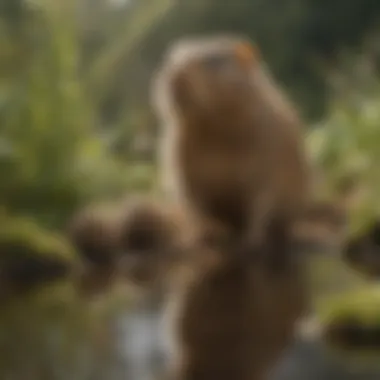
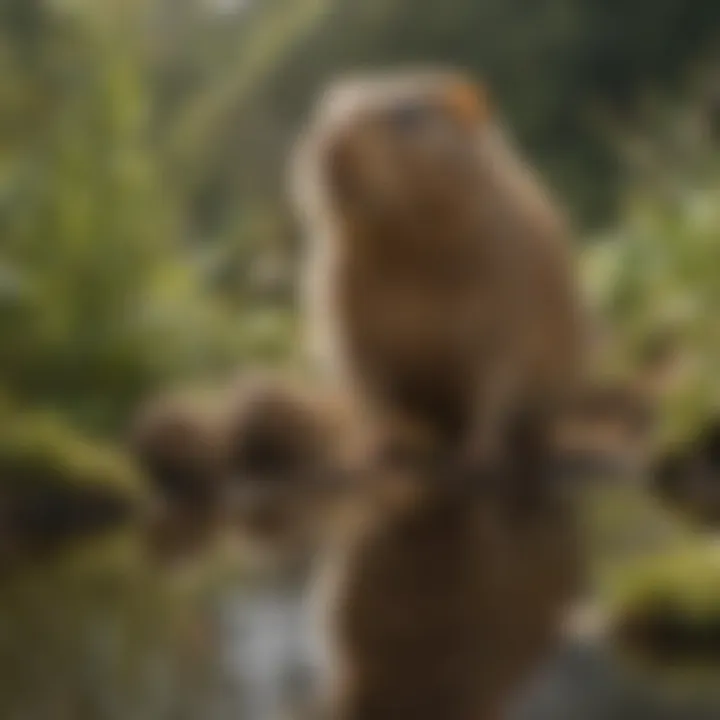
Some tips for assessing the infestation include:
- Identify Burrows: Locate entrance holes in the ground which can indicate the presence of voles.
- Inspect Plants: Look for gnaw marks on stems and roots.
- Observe Activity: Monitor which areas of the garden are more affected. This can help in choosing trap locations.
By gathering this information, you can make educated decisions on where to focus your trapping efforts. Neglecting this step could lead to wasted resources and time.
Setting Up the Trap Area
Setting up the trap area properly is vital for an effective trapping process. After identifying where the voles are most active, you can begin arranging the traps. Consider placing traps near their burrows and along their runways. Make sure to keep the traps hidden and close to the ground for optimum effectiveness.
Follow these guidelines for setting up the trap area:
- Choose Locations Wisely: Position traps where there are visible signs of vole activity.
- Clear the Surroundings: Remove any debris or excess vegetation around the traps to avoid giving voles hiding places.
- Be Discreet: Cover traps lightly with soil or grass to make them less noticeable to the voles while still allowing access.
When setting up traps, safety is key. Always follow the manufacturer's instructions to ensure traps are correctly positioned and secured.
"Proper preparation is half the victory."
Remember, a well thought out approach increases the likelihood of capturing voles while minimizing any negative impact on your garden and its environment.
Trapping Techniques
Successfully trapping voles requires an understanding of specific techniques that maximize efficiency and minimize unnecessary harm. Emphasis on trapping techniques is critical because it not only enhances the probability of catching these rodents but also encourages humane practices. Careful positioning and selection of bait are two focal considerations that directly influence the success of any trapping strategy. Applying these strategies effectively leads to a more manageable ecosystem within your garden, thereby preserving its integrity while addressing the vole issue.
Positioning Traps Effectively
Positioning traps in the appropriate locations is essential for achieving desired results. Voles tend to create distinct runways along the edges of gardens, as well as near their burrows or food sources. Identifying these pathways is fundamental. Once you locate these areas, you can place traps strategically. A common practice is to place traps in a 90-degree angle to the active runways; this alignment ensures the best chance of capture.
Regular monitoring of these positions is also vital as it allows for adjustments based on vole activity. If traps are not catching voles, consider shifting them slightly closer to hotspots of activity.
Bait Selection and Placement
Choosing the right bait can significantly affect trapping success. Selecting an attractive bait is crucial, as it lures voles effectively.
Types of bait
When it comes to types of bait, some popular choices include peanut butter, oats, and apple slices. Each bait has unique characteristics. For example, peanut butter is favored for its strong smell, which can attract voles from a distance. It is sticky, increasing the chances of the voles remaining engaged and thus ensuring effective capture. Oats have proven effective due to their natural appeal as voles frequently seek grains. Meanwhile, apple slices can entice voles as they offer a taste of sweetness.
Selecting bait depends on your personal preferences and the specific conditions of your garden, as well as the dietary habits observed in local vole populations. Different baits may yield different results. With this in mind, experimenting with these choices may increase your overall trapping efficacy.
Bait placement strategies
Proper bait placement is as important as the bait itself. Placing bait inside traps in a manner that encourages voles to enter is important. Always position bait at the back of the trap. This placement compels the vole to fully enter the trap, increasing the likelihood of capture. Additionally, it is advisable to set the bait in a manner that it is protected from other animals, which could inadvertently consume the bait without triggering the trap.
When evaluating bait placement strategies, consider factors such as weather conditions and other environmental factors that may influence vole behavior. Adjustments might be required, as certain conditions can alter how voles respond to bait.
Effective bait selection and placement can increase the probability of capturing voles while ensuring a humane and hassle-free process.
Ultimately, both bait selection and placement strategies are core components of successful trapping. Proper execution of these techniques can lead to notable improvements in your garden's health.
Monitoring Trapping Success
Monitoring trapping success plays a crucial role in managing vole populations in your garden. This section delves into the specific components vital to adherence and long-term effectiveness when it comes to trapping voles. Regular monitoring allows you to assess which traps are working efficiently, adjusting strategies as needed. Furthermore, it enables the identification of patterns in vole activity, providing insight into their habits and preferences.
Another advantage of monitoring success is the opportunity it affords for ecological mindfulness. By keeping a close watch on the traps, you can evaluate the effects of your actions on the environment and the overall balance of your garden ecosystem. Such vigilance is key to maintaining a harmonious relationship with local wildlife while addressing pest issues.
"Regular assessments not only measure success but also shape future trapping strategies."
Regular Checks on Traps
Establishing a routine for checking traps is essential. Ideally, traps should be inspected daily, especially during the initial phase of trapping when responses can be variable. This ensures that any captured voles are dealt with in a humane manner, regardless of the trapping method employed. Additionally, frequent checks help avoid unnecessary stress for any captured rodent, safeguarding their well-being.
During these inspections, it is important to evaluate:
- Trap Condition: Ensure traps are functioning properly; malfunctioning traps can result in failed capturing attempts.
- Bait Status: Check if bait has been consumed or weathered, resulting in less effectiveness.
- Location Assessment: If no voles are being caught, it may be time to reconsider the positioning of the traps.
Regular checks not only contribute to humane practices but also enhance the overall efficiency of your trapping methods.
Evaluating the Efficacy
Evaluating the efficacy of your vole trapping endeavors involves interpreting data gathered from your monitoring activities. It's not merely about counting the number of voles caught, but rather understanding trends in vole behavior. Look for patterns that indicate the success of your approach. For instance:
- Are certain traps more successful than others?
- Is there a peak time when the voles are most active?
- What types of bait are yielding the best results?
It is useful to keep a log of your findings, noting various conditions and results. This record can help refine your strategies, leading to better overall outcomes. Adjustments based on this gathered data can improve your approach and reduce the overall time necessary to manage a vole population effectively.
Removing Captured Voles
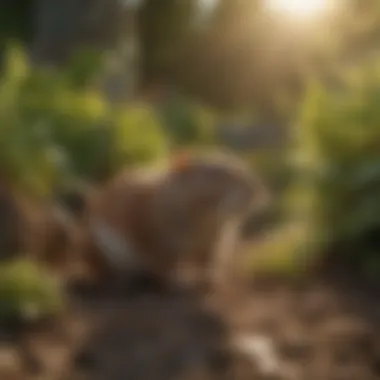
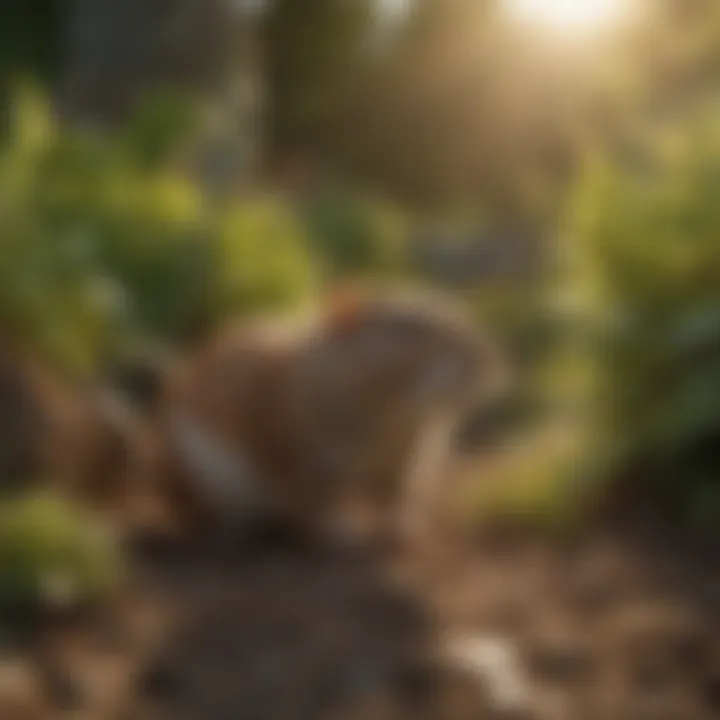
The removal of captured voles is a critical phase in effective vole management. Properly dealing with voles once they are trapped is essential for several reasons, including ecological responsibility and humane treatment of animals. Understanding the methods available for removing captured voles contributes to overall garden health and a balanced ecosystem.
Using humane release options shows respect for animal life and can mitigate ethical concerns. This method allows you to relocate voles safely, minimizing stress to the animals. However, selecting the appropriate location for release is crucial. It's important to choose an area that can support voles without causing conflict with nearby gardens or human habitats.
In contrast, if humane release is not feasible or desirable, safe disposal methods become necessary. It is vital to handle this aspect with care, prioritizing public health and environmental safety. Understanding local regulations around pest disposal is another critical factor, as improper methods can lead to legal issues or ecological harm.
Humane Release Options
Humane release options are favored for homeowners who want to avoid killing voles and prefer to manage the problem without creating additional casualties. It involves the careful relocation of captured voles to a different environment, ideally a natural area with ample food and shelter.
When considering humane release, keep in mind:
- Location Selection: Find areas far enough away from homes and gardens. Relocate voles to fields, woodlands, or areas with minimal human activity.
- Timing: The best time for release is during mild weather, avoiding extremes in temperature.
- Surveillance: Observe the release site, ensuring that the voles adapt successfully to their new environment.
"Humane control methods are essential to maintain ecological balance while addressing pest issues."
Safe Disposal Methods
For those who opt for a different approach or when humane options are not tenable, safe disposal methods must be adhered to diligently. Avoiding harmful impacts on the environment and adhering to local regulations is crucial.
Some accepted methods of disposal include:
- Contact Local Services: Many communities offer services for wildlife control that can assist in proper disposal.
- Follow Guidelines: Always refer to local ordinances governing pest disposal. These regulations often outline methods that are acceptable and those that are prohibited.
- Consider Safety: Use gloves and seal voles in a container before disposing to prevent exposure to diseases or pests.
Taking responsible actions when removing captured voles not only demonstrates ethical compliance but also encourages a positive image of pest management in the community.
Preventing Future Infestations
Preventing future infestations of voles is a crucial aspect of maintaining a healthy garden. Once voles have entered your space, they can cause significant damage by feeding on plant roots, bulbs, and tubers. Additionally, they can reproduce quickly, leading to larger populations and more extensive destruction if not controlled. By implementing effective prevention strategies, you minimize the chances of their return and protect your garden�’s integrity. This section discusses practical measures such as landscape modifications and ongoing monitoring practices that serve to deter voles from making your garden their home.
Landscape Modifications
Landscape modifications play a vital role in deterring voles and limiting their habitats. Voles thrive in dense cover and lush vegetation that provides both food and shelter. To reduce their appeal, consider the following adjustments:
- Trim Overgrown Vegetation: Regularly cutting back tall grass, bushes, and weeds can eliminate cover that voles seek. They prefer areas where they can hide, so a well-maintained garden will discourage them.
- Create Barriers: Physical barriers such as wire mesh or hardware cloth installed around tree trunks or garden beds can prevent voles from accessing vulnerable plants. Ensure these barriers extend several inches underground to block their burrowing capabilities.
- Use Mulch Wisely: While mulch can help retain moisture and suppress weeds, certain types attract voles. Avoid using materials like straw or grass clippings, as these can provide nesting materials. Opt for stone or gravel instead.
- Diversify Plant Selection: Some plants, such as daffodils and lavender, are less appealing to voles. By incorporating these into your garden design, you can create less hospitable conditions that will discourage infestations.
These modifications can create an environment that is less inviting to voles, thus reducing the chances of future infestations.
Ongoing Monitoring Practices
Monitoring is essential in understanding whether your preventive measures are effective. Regular observation and evaluation allow for timely actions if vole activity is detected. Here are key practices to consider:
- Check for Signs of Activity: Look for signs such as burrows, droppings, and damaged plants regularly. Early detection allows for quicker response, minimizing potential damage.
- Seasonal Assessments: Vole populations can fluctuate with the seasons. Conduct thorough inspections during early spring and fall when these creatures are most active.
- Maintain Traps: If you use traps, they should be checked frequently. Even when no voles are captured, presence of traps can serve as a reminder to remain vigilant. Reassess their positioning based on any new signs you may observe.
- Document Changes: Keeping a record of any changes made to your garden and their effects can be beneficial. Note when new plants are introduced or when landscaping adjustments are implemented, along with their outcomes concerning vole activity.
"Regular monitoring and immediate response can significantly decrease the likelihood of vole infestations in your garden."
Incorporating these practices into your gardening routine not only helps in vole prevention but also contributes to overall garden health. By staying proactive, you will empower yourself to protect your garden from unwanted rodent guests.
Case Studies in Vole Trapping
Case studies provide valuable insights into real-world applications of trapping voles. They help understand the practical implications of various trapping strategies. Studying different experiences can highlight both success stories and setbacks. Each case study serves as a microcosm of the broader challenges faced by gardeners. This section will explore successful trap strategies and lessons learned from failed attempts, illustrating the nuances involved in effective vole management.
Successful Trap Strategies
In various gardens, success in trapping voles has been achieved through carefully devised methods. Here are some effective strategies based on specific case experiences:
- Placement of Traps: Effective placement can greatly influence trapping success. Traps should be placed in areas with clear signs of vole activity, such as tunnels or droppings. One homeowner reported a 70% catch rate by situating traps near well-defined paths.
- Bait Selection: Choosing the right bait is crucial. Using fresh fruits, especially apples, has yielded good results. A case study detailed the use of peanut butter, which was particularly effective when combined with a touch of oatmeal. This led to increased captures, suggesting that voles were lured by the appealing scent.
- Trap Maintenance: Regular checks on traps are vital. One gardener noted that checking traps daily allowed for timely removal of captured voles, which minimized stress on the animals and increased efficiency.
Lessons Learned from Failed Attempts
Failures in trapping attempts can be enlightening. They provide opportunities for reflection on methods and practices. Understanding these lessons can prevent future mistakes and enhance trapping effectiveness. Here are some common themes from unsuccessful cases:
- Improper Trap Setup: Many failed attempts stemmed from poorly positioned traps. One gardener set the traps too far from the main vole activity, resulting in zero captures. Proper assessment of the area before trapping can save time and resources.
- Using Ineffective Baits: Some tried using baits that did not attract voles effectively. One homeowner experienced limited success with seeds while others found that fresh fruits yielded better results. This indicates that bait must align with vole preferences.
- Neglecting Environmental Factors: Certain traps that were left unchecked in adverse weather led to damage or ineffective captures. A notable case emphasized the importance of adjusting strategies according to seasonal changes or rainfall.
Learning from both successful strategies and failures helps gardeners refine their approach to trapping voles. Incorporating these insights can lead to more efficient management of vole populations in gardens.
Closure
In summary, effective vole management is crucial for maintaining healthy gardens and landscapes. This article has explored various dimensions of trapping voles, focusing on humane techniques, proper tool selection, and strategic planning.
Recap of Effective Strategies
Revisiting the strategies discussed throughout the article highlights several key points for successful vole trapping:
- Understanding Vole Behavior: Familiarizing oneself with how voles move and what attracts them to specific areas can enhance trapping efforts.
- Tool Selection: Choosing the appropriate traps, such as snap or live traps, can significantly impact capture success. Each type has its own advantages and disadvantages that must be considered based on the individual's gardening context.
- Bait Techniques: The effectiveness of traps often hinges on the bait used. Selecting the right bait and placing it strategically are essential components of successful trapping.
- Continuous Monitoring: Consistently checking traps and reassessing methods will ensure traps remain effective throughout the season and account for any changes in the vole population.
- Humane Practices: Prioritizing humane trapping methods aligns with ethical pest management, reflecting a commitment to ecological balance and animal welfare.
Final Thoughts on Vole Management
Ultimately, managing voles requires a blend of knowledge, patience, and commitment to ethical practices. It is important not to view pest control merely as a means of eradication but as part of a larger ecosystem management strategy. By employing thoughtful techniques, homeowners can enjoy resilient gardens while maintaining harmony within their environment.
Moreover, education plays a critical role in what it means to be a responsible gardener today. Engaging in practices that benefit both your garden and local fauna creates a richer gardening experience. As you implement these strategies, remember the impact of your choices. The balance between managing pests and nurturing nature is delicate, and responsible action will guide you in the right direction.
"Management should aim not just at control but also at coexistence, a balance that benefits both the garden and its inhabitants."



